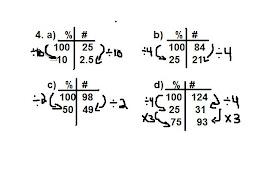Steps to convert fractions to decimals.
1. Divided the denominator to itself.
now the denominator is one.
2. Now you divided the denominator to the
numerator. Now you have a decimal over one.
3. Finally round it off to the place value indicated.
Also Here is a picture of the place values we are going
to use.
These are the place values
we are going to use for the
questions below. Also we will
be using ten thousandths just for
rounding off.
5.Use a calculator to change each fraction to
a decimal number. Round to the place
value indicated.
p.g 137 in MathLinks 7
Number 5 questions.
a) round to the nearest tenth e.g 0.1, 0.2 , 03 .etc
 <-As you see I followed all the steps
<-As you see I followed all the stepsthe 0.5/1 was supposed to be 0.52/1.
remember below 5 stays, over 5 five
goes up. 2 in the hundredths place is below
5. So 0.5 stays as 0.5.
b) Round it off to the nearest hundredth e.g 0.10, 0.20, 0.25 .etc
<-As you Again I followed all the steps.
this picture is already rounded off.
The real numbers were 0.49767442.
The numbers you have to look at to round
off the decimal is 0.497 remember below 5 stays
over 5 five goes up. 7 is above 5 so the
hundredths place goes up by one.
That's why it's 0.50/1.
c)Round it off to the nearest tenth e.g 0.1, 0.2 , 03 .etc
<-Once again I followed all the steps.
This picture is once again rounded off
already. The real numbers were 0.86.
6 is above 5 so 8 goes up by one. I guess you
know the rules for rounding off
below 5 stays and above 5 goes up.
d)Round it off to the nearest thousandth e.g 0.123, 0.234, 0.345, 0.543. etc

<- Finally! The last one. As you see I followed all the
steps. This picture is already rounded off. The original
number of 0.682/1 was 0.6816609. I look at the ten
thousandths place it was the number 6. 6 is above 5 so
the thousandths place goes up by one.
I hope you guys learned Something!
Things I used:
Calculator
Paint
Math Notes
My Head
The Computer.
Here's a link to learn more.
Also you can play this
Game converting fractions
to decimals.
Read Instructions First before playing
Also don't be afraid on making mistakes.
Mistakes help you learn something new.
"A person who never made a mistake never tried anything new."











































 <-As you see I followed all the steps
<-As you see I followed all the steps





